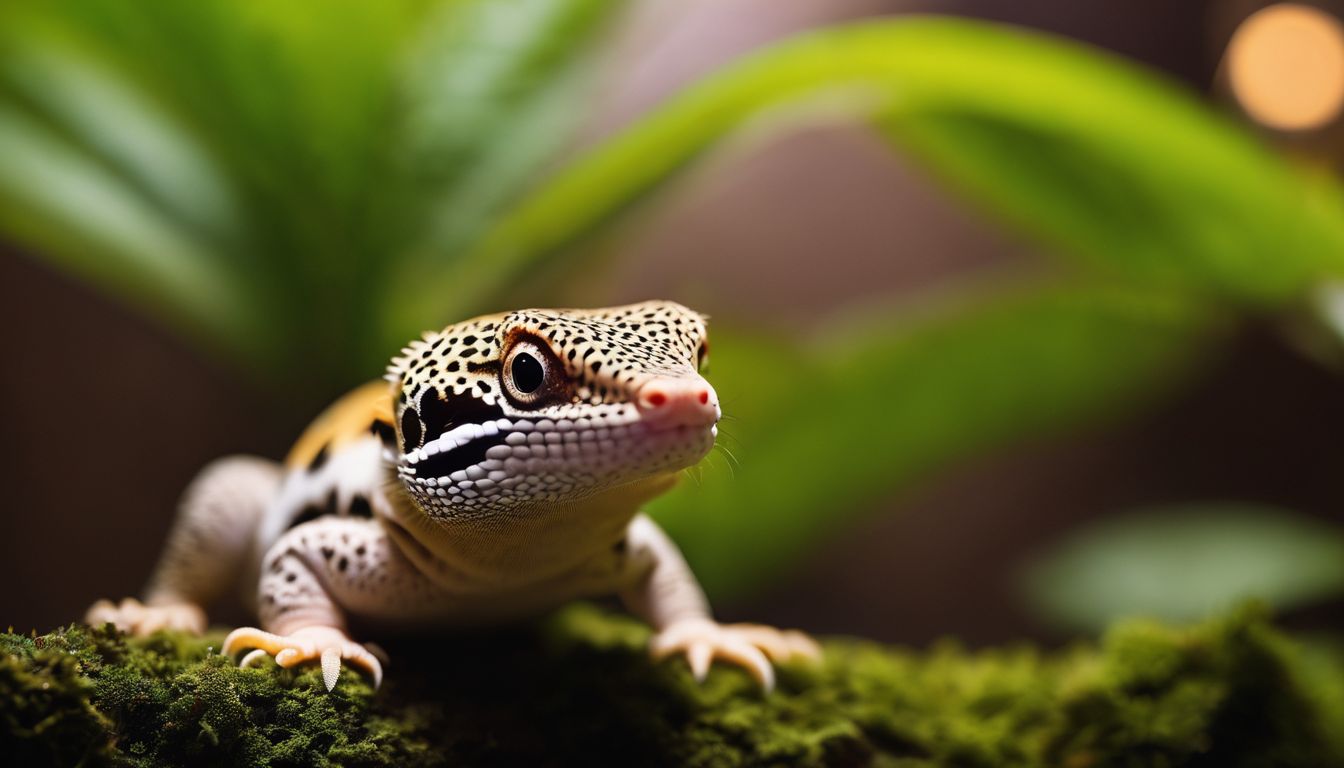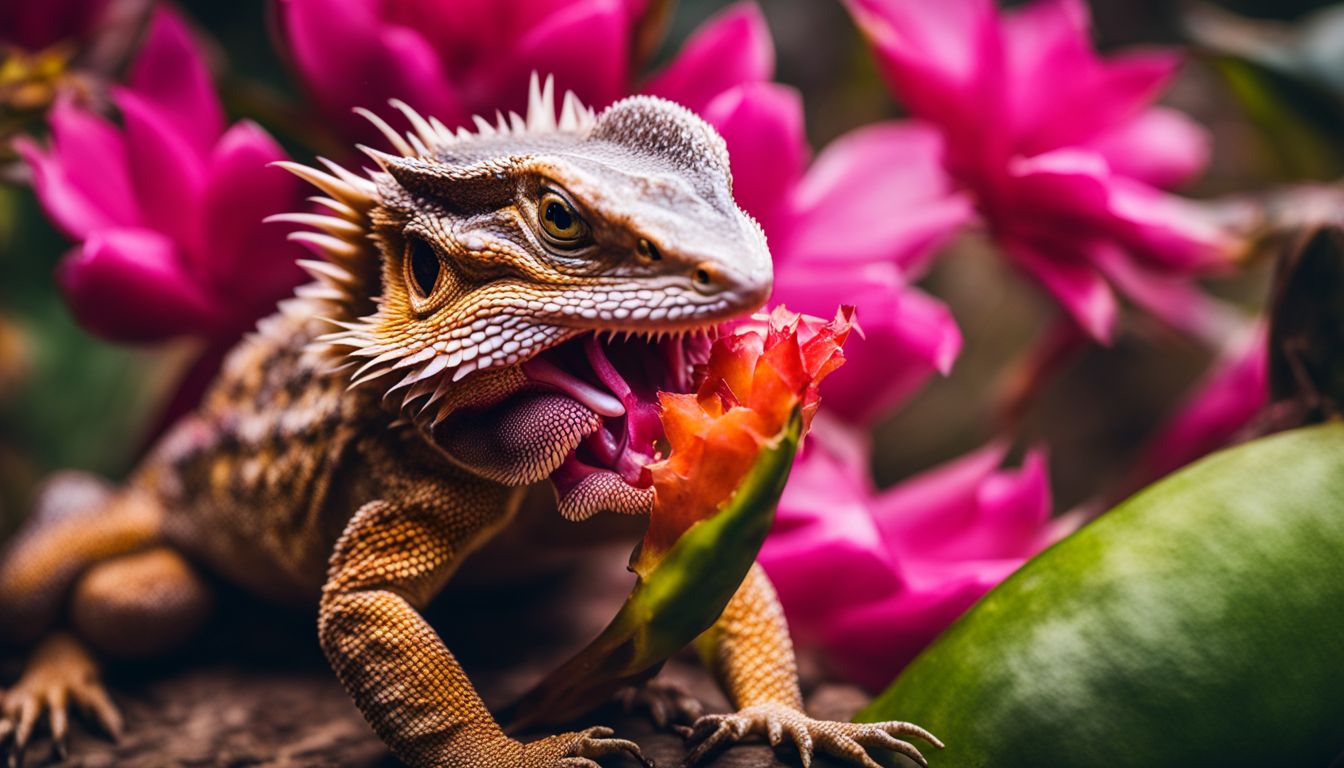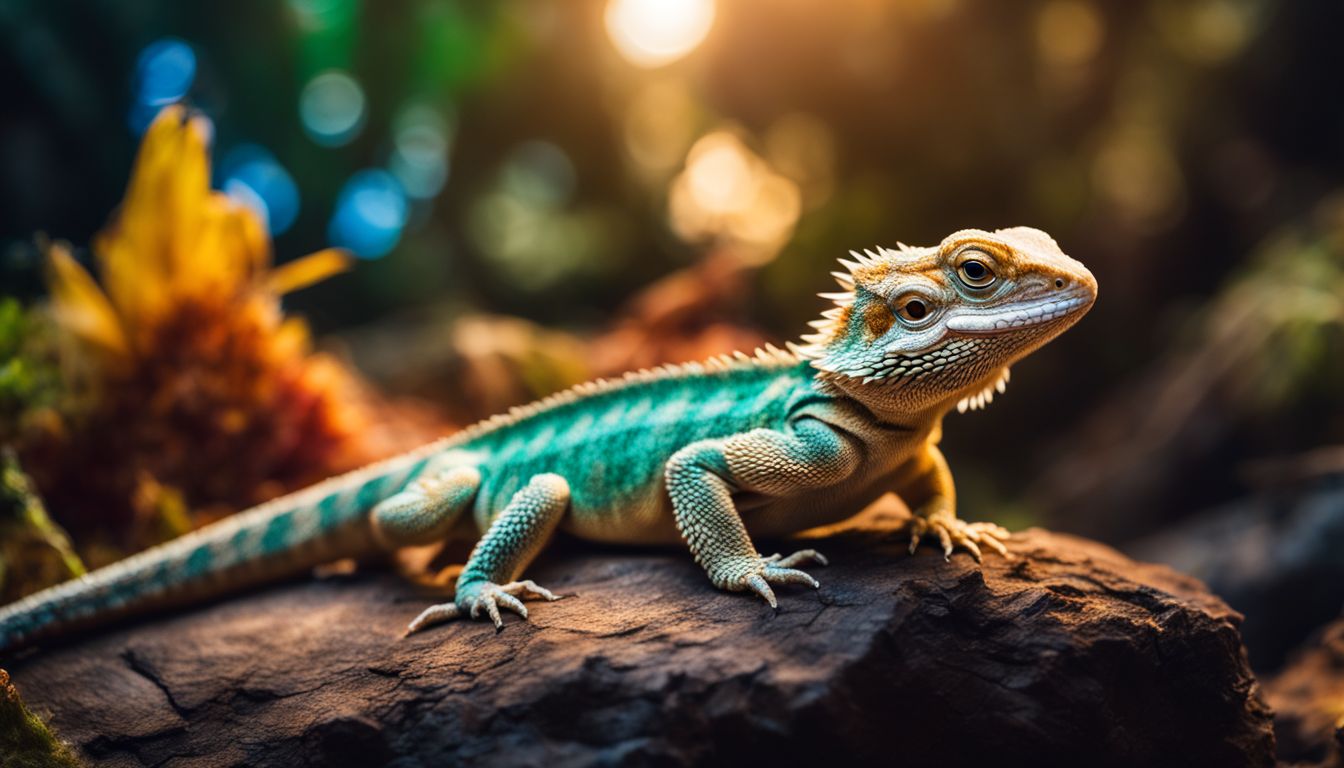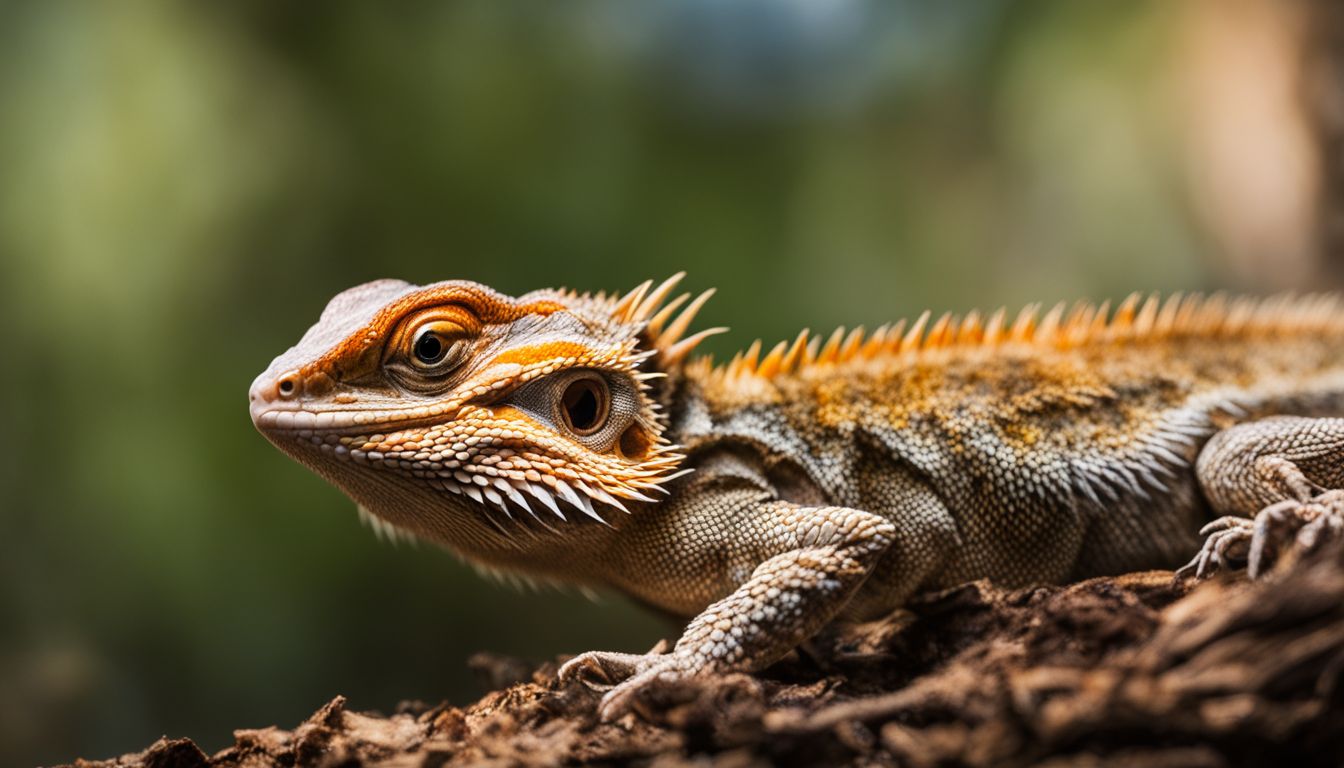Leopard geckos are fascinating creatures that have captured the hearts of reptile enthusiasts worldwide. A common question among new and seasoned gecko caretakers is: can these small, nocturnal lizards see when the lights go out? It’s important to understand their vision capabilities, especially if you’re looking to create a comfortable habitat for your scaly friend.
One amazing fact about leopard geckos is that they have eyes up to 350 times more sensitive than human eyes in dark conditions! This incredible adaptation allows them to navigate and hunt effectively at night.
Our article dives into what makes their night vision so powerful and how you can take care of your gecko by considering its visual needs.
By shedding light on this topic, we aim to enhance your understanding of these unique animals and ensure your gecko thrives even after sundown. Keep reading; it’s going to be an eye-opener!
Key Takeaways
- Leopard geckos have exceptional night vision, with eyes up to 350 times more sensitive than human eyes in dark conditions. Their ability to see in low-light environments is due to specialized adaptations such as a reflective layer called the tapetum lucidum and large pupils that maximize light intake.
- To support their well-being, it’s crucial to provide suitable lighting for nighttime observation using red or purple-colored LED lights while avoiding bright white or blue lights that can disrupt their natural night vision.
- Understanding the importance of darkness for leopard geckos is vital as it supports their natural behaviors, resting patterns, hunting behavior, and overall health. Mimicking their natural habitat and promoting behavioral normalcy through periods of darkness aids in maintaining the physiological and behavioral needs of leopard geckos.
Understanding How Leopard Geckos See
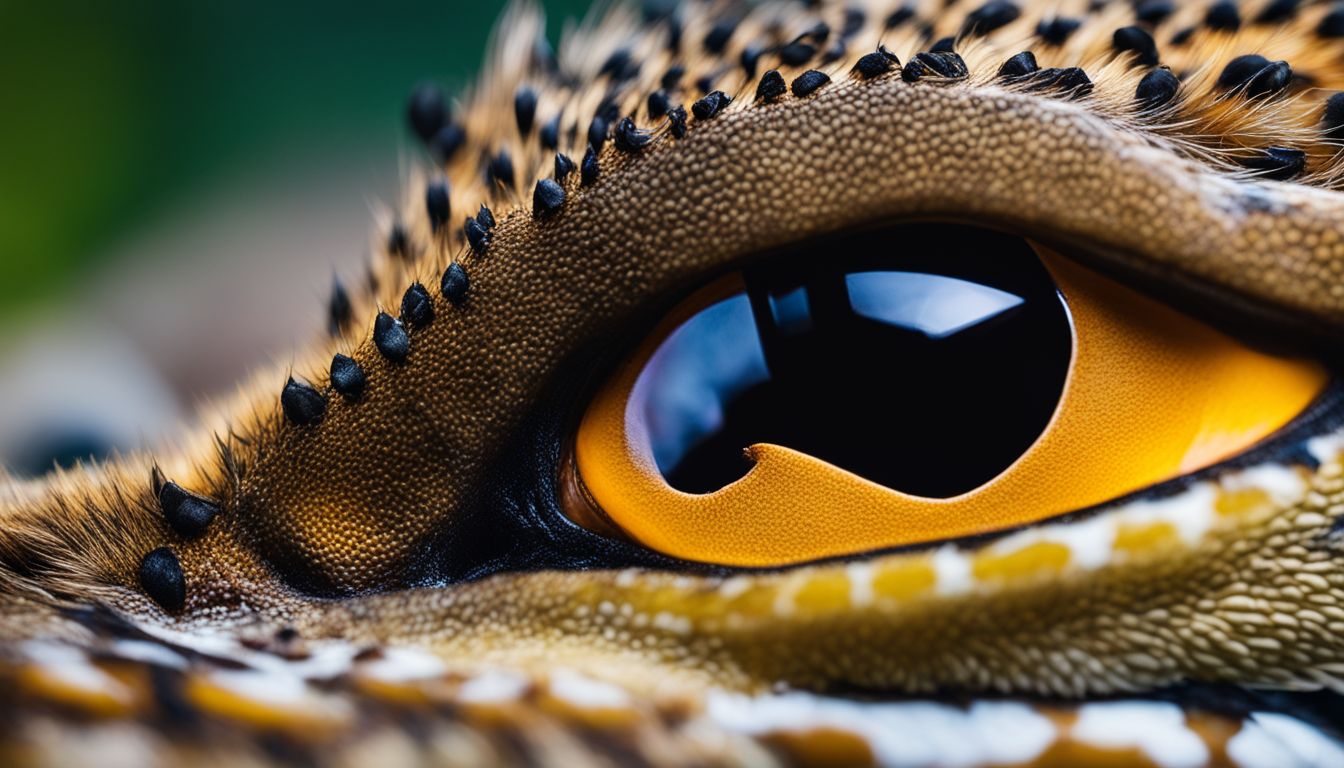
Leopard geckos have both rod and cone cells in their eyes, allowing them to see in color during the day. Additionally, they possess a specialized layer called the tapetum lucidum that enhances their night vision abilities.
The Role of Rods and Cones
In the eyes of leopard geckos, there are two main types of cells called rods and cones. Rods are like tiny night-vision goggles inside their eyes. They let them see really well when it’s dark by catching even small bits of light.
Because they have a lot of rods, leopard geckos can hunt and move around at night.
Cones help with seeing colors during the day. Although these lizards are great at seeing in low light, they don’t use cones as much then. When evening comes, their world doesn’t stay black and white because their eyes adjust to make the most out of dim light.
This means they can live and find food both day and night without missing much action!
The Tapetum Lucidum: A Night Vision Enhancer
The tapetum lucidum is a special layer in the eyes of leopard geckos that makes their night vision strong. It acts like a mirror inside their eyes, reflecting light back through the retina.
This means even when there’s very little light, like at night, they can still see well.
This shiny layer helps them spot prey and move around in low light. Thanks to the tapetum lucidum, leopard gecko’s eyes can glow in the dark if a light shines on them. Their ability to see at night is much better than humans because of this cool feature.
Now let’s dive into more about how these amazing creatures use their incredible eyes to navigate the world after sunset.
The Science Behind Their Night Vision Abilities
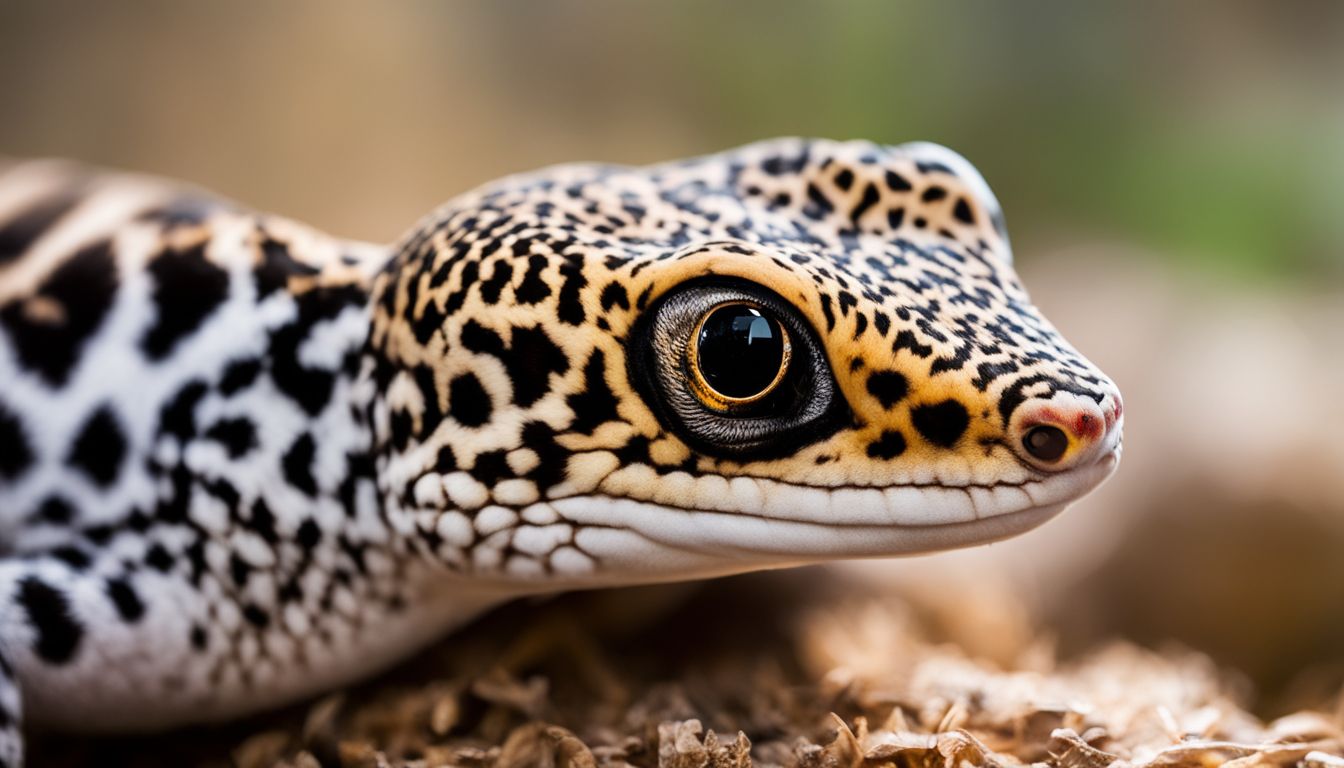
Leopard geckos have large pupils to maximize light intake and tapetum lucidum, a reflective layer behind the retina that enhances their night vision. Their retinas can regenerate, allowing for ongoing sharpness in low light conditions.
Large Pupils for Maximum Light Intake
Leopard geckos have big pupils that let in lots of light. This helps them see very well when it’s dark. Their pupils can get bigger or smaller to let in the right amount of light, just like a camera lens does.
When there isn’t much light, like at night, their pupils open wide to gather as much light as possible.
Gecko eyes are super sensitive and can be 350 times more alert to light than human eyes are in the dark. With such big pupils and sharp vision, leopard geckos can spot their prey even when it’s not very bright out.
Next up is how their retinas keep getting ready for perfect sight all the time.
Regenerating Retinas for Ongoing Sharpness
To ensure ongoing sharpness in their vision, leopard geckos have a remarkable ability to regenerate their retinas. This means that any damage or wear and tear to the cells in their eyes can be repaired, maintaining their excellent night vision abilities.
The regeneration of retinas allows leopard geckos to sustain clear eyesight, ensuring they can continue thriving in low-light conditions and effectively hunt for prey.
Leopard geckos’ capability to regenerate their retinas is an essential adaptation that ensures they maintain exceptional night vision throughout their lives. Unlike humans, whose retinas do not possess this regenerative ability, leopard geckos can continuously replenish damaged cells in their eyes.
Practical Insights: Lighting for Leopard Geckos
Providing the right lighting for your leopard gecko is crucial for their well-being. Learn about suitable lights for nighttime observation and how to provide heat without disrupting their night vision.
Suitable Lights for Nighttime Observation
Leopard geckos need specialized lighting for nighttime observation. Here are some important points to consider:
- Use red or purple – colored LED lights to provide a dim glow without disturbing their natural night vision.
- Avoid using bright white or blue lights as they can disrupt the gecko’s nocturnal behavior.
- Ensure the temperature is maintained by using ceramic heat emitters or under-tank heating pads.
- Create a natural day – night cycle by using a timer for the light and heat sources.
- It’s essential to mimic their natural habitat and provide darkness during the night for healthy behavioral patterns.
Providing Heat Without Disrupting Their Night Vision
Leopard geckos need heat to stay healthy, but the light from heat lamps can disrupt their night vision. Here’s how to provide the necessary warmth without affecting their ability to see in low light:
- Use a ceramic heat emitter instead of a light bulb to avoid disturbing their night vision while still providing warmth.
- Position the heat source on one side of the enclosure, creating a temperature gradient so that they can choose between warmer and cooler areas as needed.
- Utilize an under – tank heating pad or tape to warm the bottom of the enclosure, which also helps maintain their night vision.
- Monitor temperatures regularly with a thermometer to ensure that the overall temperature is suitable for your gecko without impacting its eyesight.
Feeding Leopard Geckos in Low Light Conditions
Leopard geckos have excellent night vision and can hunt in low light conditions, making it possible for them to catch prey even in the dark. Their ability to see in the dark is due to their nocturnal nature and special adaptations in their eyes, allowing them to detect movement and track down their food with ease.
Can They Hunt Prey in the Dark??
Leopard geckos can hunt prey in the dark. Their exceptional night vision enables them to detect movement and locate their prey even in low-light conditions. With highly sensitive eyes that have a high proportion of rods, which are specialized for seeing in dim light, leopard geckos are well-equipped for hunting at night.
Additionally, their large pupils allow more light into their eyes, further enhancing their ability to spot and capture prey in the dark. These incredible adaptations make them skilled nocturnal hunters with the capability to thrive in low-light environments by utilizing their remarkable night vision abilities.
Diet Considerations: Can Leopard Geckos Eat Silkworms?
Leopard geckos can eat silkworms. Silkworms are a nutritious and soft-bodied feeder insect, making them an excellent choice for leopard geckos. Their high moisture content also helps prevent dehydration in geckos, which is great considering that leopard geckos need proper hydration to stay healthy.
Silkworms also have a favorable calcium to phosphorus ratio, providing essential nutrients for the leopard gecko’s diet.
Silkworms offer numerous benefits as part of a well-rounded diet for leopard geckos. They are easy to digest and provide essential nutrients required for maintaining good health in these reptiles, making them an ideal food choice.
Caring for Your Nocturnal Companion
It’s important to understand that leopard geckos are nocturnal creatures and need darkness to thrive. Providing them with a suitable environment that mimics their natural habitat is crucial for their overall well-being.
Understanding Their Need for Darkness
Leopard geckos need darkness for their well-being. Darkness is essential for their natural behaviors and health. Here’s why:
- Simulates Their Natural Habitat: Leopard geckos are nocturnal, meaning they are most active during the night and prefer low light conditions to mimic their natural environment.
- Supports Their Resting Patterns: Darkness allows them to rest and regulate their internal clocks, promoting overall health and well-being.
- Facilitates Hunting Behavior: In darkness, leopard geckos can exhibit their natural hunting behaviors, enabling them to find and catch prey more effectively.
- Reduces Stress Levels: Providing periods of darkness helps reduce stress for leopard geckos, promoting a calm and comfortable environment for them.
- Maintains Healthy Sleep Cycles: Darkness aids in regulating their sleep patterns, ensuring they get enough rest for energy and vitality.
- Promotes Behavioral Normalcy: Periods of darkness help maintain the physiological and behavioral needs of leopard geckos by allowing them to engage in activities typical of their species.
Conclusion
In conclusion, leopard geckos have remarkable night vision abilities. Their highly evolved eyes and specialized retinas allow them to see in low-light conditions. Understanding their need for darkness is crucial for their well-being.
By providing suitable lighting and considering their diet requirements, we can ensure the welfare of these nocturnal creatures. This practical approach can significantly contribute to maintaining the health and happiness of our gecko companions.
How will you apply this newfound knowledge to care for your own leopard gecko?.
FAQs
1. Can leopard geckos see in the dark?
Yes, leopard geckos have excellent night vision due to their specialized eyes that are adapted for low-light conditions.
2. What do leopard geckos use their night vision for?
Leopard geckos use their night vision to hunt for food and navigate their surroundings during the nighttime, as they are nocturnal animals.
3. How do leopard geckos\’ eyes work in low-light conditions?
Leopard geckos have large pupils and a high number of rod cells in their eyes, which helps them gather more light and see well in the dark.
4. Do leopard geckos rely solely on night vision?
No, while leopard geckos have excellent night vision, they also rely on other senses such as smell and touch to explore their environment and find prey.
5. Are there any special considerations needed to support a pet leopard gecko’s night vision at home?
Using red or blue spectrum lighting instead of bright white light can help maintain a natural day-night cycle for your pet leopard gecko without disrupting its sensitive night vision.

